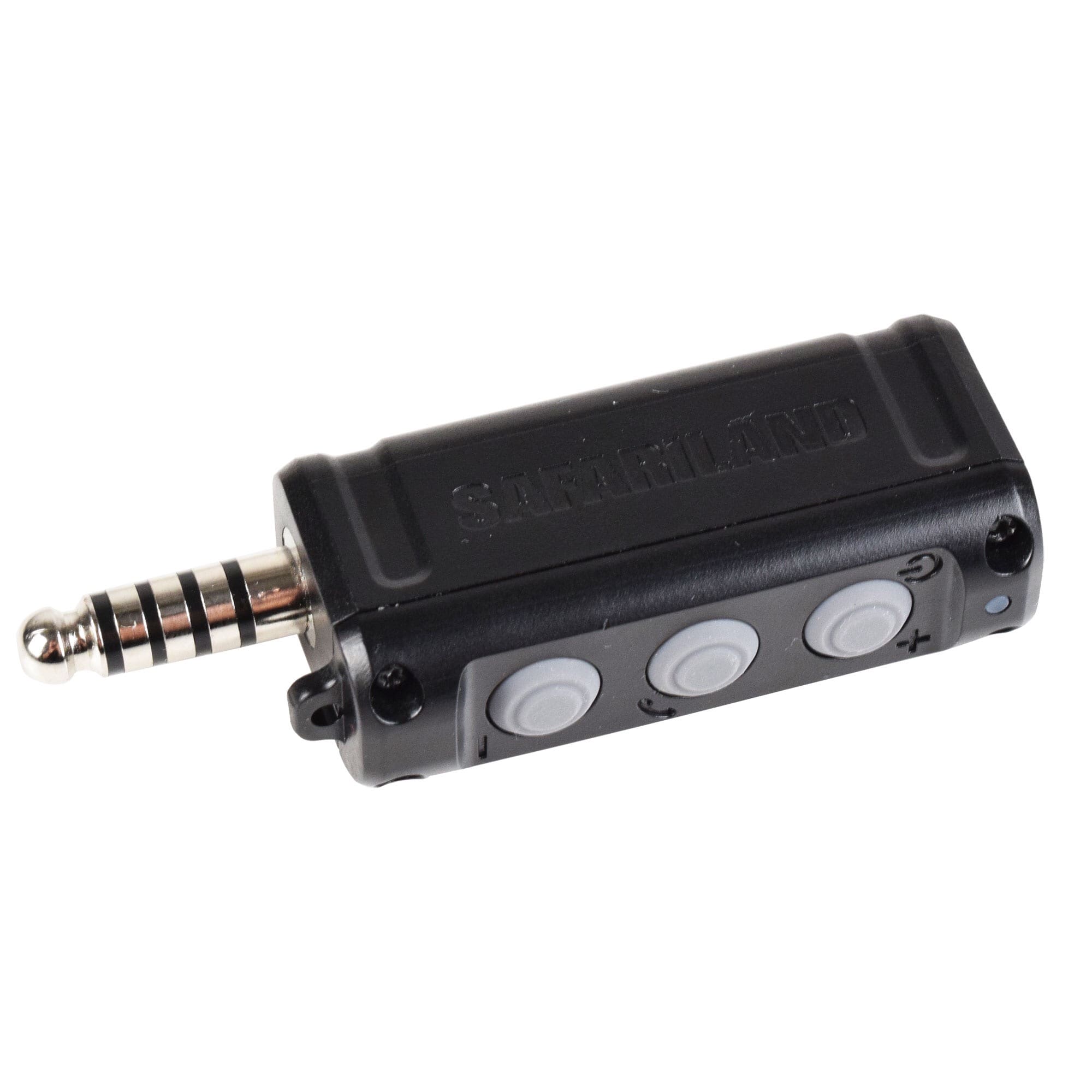I was walking through the aisles at Modern Day Marine when I ran across the Quantico Tactical booth. It was like a mini trade show in itself, but one thing I wanted to get out right away was this Bluetooth Module for tactical comms headsets from Tactical Command Industries. It was set up as a component on a rig like you see below and was so unobtrusive I probably wouldn’t have even noticed it if Retired TACP Jim Price hadn’t pointed it out to me.
I picked it up to check it out. It’s super simple, connecting to the switch via a pigtail with just a few buttons to conncet your Bluetooth enabled device to the rest of your comms. The hardened three button design is standard with many commercially available Bluetooth headsets and earpieces and the buttons are large enough to be used with gloves on. It is rechargeable via mini USB.
Think about how often you use a cell phone. Now, you can integrate it into your gear, when needed. For some, it will be your primary comms. Others will fit it into the PACE structure somewhere. Shoot, some guys will connect their cell just so they can listen to music through their headphones.
Granted, this isn’t the first deployment of a means to integrate cell service. But this was designed by TCI to work specifically with their widely deployed dual communications architecture found in the later R.3 and the new R.4 dual push-to-talk systems. TCI’s dual communications system is specifically designed to separate the two audio channels so there is no shared connections and no physical or electronic way for audio from one channel to bleed into the transmission on the other. Additionally, their PTT’s incorporate a lock out feature that disables the opposite PTT switch from the one that is in use. Because of these features, a cellular device, which requires no PTT as the microphone is active once a call is placed/accepted, has its audio in mute mode while the other channel is in active use. This prevents radio traffic, either received or transmitted, from being heard on the cell phone. This feature keeps radio transmissions, which may be encrypted, off of the cell phone audio. That would be a major problem, enabling threats to work to undermine our encryption. This system is by far more secure than the common practice of using a cell phone by lifting up an earcup to talk on it. This may actually expose the phone to radio traffic that is not cleared for cell phone transmission resulting in inadvertant disclosure.
Finally, the module is impedance agnostic. It will work with both high and low impedance headsets. There is no need for an extra cable or impedance matching hardware to be incorporated.
The Blue Tooth Adapter from Tactical Command Industries is available for unit and agency purchase through Quantico Tactical.
Tags: Quantico Tactical, TCI





Any particular reason why they went with mini USB, and not the more standard micro USB?
My UnSWAG (UnSophisticated Wild Ass Guess) is that the Mini holds up better to the rigors of use in the field by barrel-chested freedom fighter types.
Most game controllers (which post/adolescent males beat up pretty good) are Mini-USB–mostly just to charge the batteries.
I just paid $50 for a teeny tube of circuit board adhesive strictly for the purpose of gluing Micro USB plugs back onto boards of a bunch of equipment in my shop.
USB C might be a better option than. It is an emerging standard (most newer phones use it) fully back compatible with USB standards. But it can be inserted in either way.
A standard “emerging” in the US might not be easily sourced where they don’t have Apple Stores.
You can buy a USB-Mini cable TODAY from the guy at the bazaar who also sells camels, goats, bootleg DVDs and Chromed AKs.
USB-C is not an Apple standard, Apple still likes to use their own proprietary standards like the Lightning port. USB-C is connection that’s found on some newer Android cell phones and will probably start to make its way to other non-Apple devices.
Apple uses USB-C on their new Macbook. But unlike Apple’s Lightning port, but is a standard by the USB consortium, and is being used on most new cellphones aimed at all but the low end market.
A quick look at my providers device list, about half of the devices offered are USB-C, the rest are micro USB. So a newly released device using mini USB seems like an odd choice, as there is a good chance that mini USB cables will become rarer than hens teeth within a few years. They are already hard to find in the US unless the store is a GoPro dealer.
Other than the bleed prevention, this is genius:
“Finally, the module is impedance agnostic. It will work with both high and low impedance headsets. There is no need for an extra cable or impedance matching hardware to be incorporated.”
I’ve worked places where this issue was a show stopper. And career ender.
No one wants to know more about that sexy laser-cut Protech vest/rig/carrier?
I do, cuz I can’t find it listed in the Safariland catalog.
Like many of the tactical comms companies, thet have busts to not only include the head but a small portion of chest to also display PTTs, as seen here. They also contract out to have some form of attachment, i.e. Molle panels. I’m assuming this is just something that was made up by protec for specific use with the display busts
I’m still waiting over here for about a half dozen quote requests from TCI….